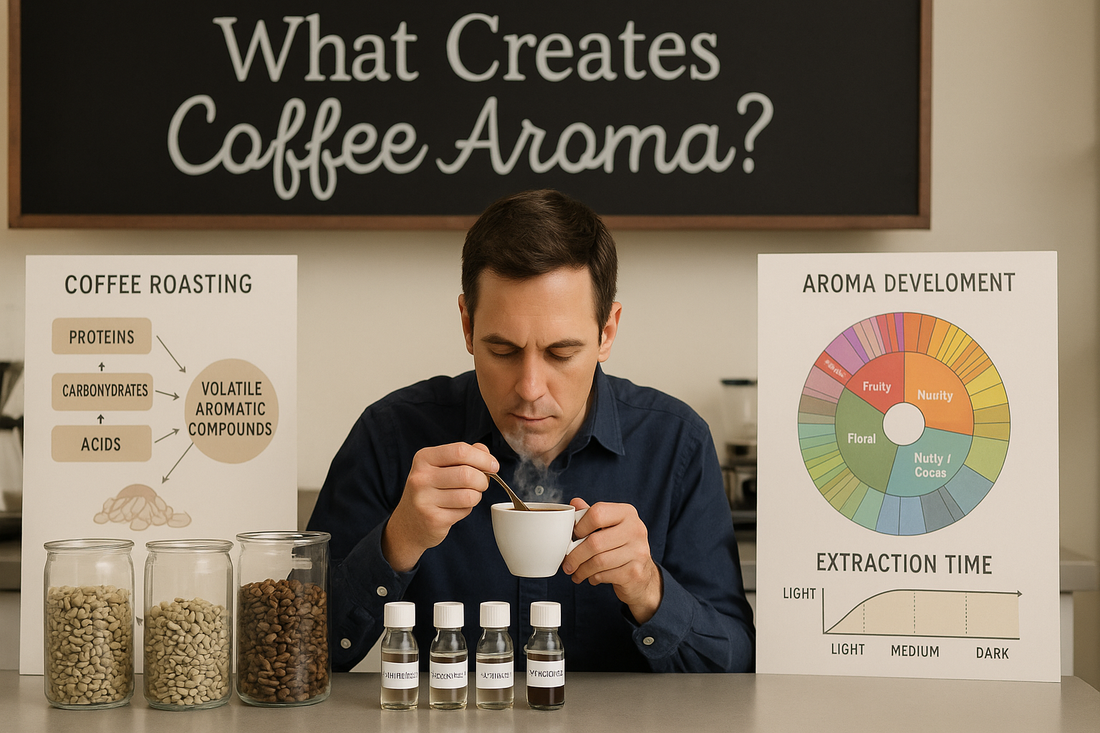
What Creates Coffee Aroma?
正啟 GLOBALEYESShare this news
Unroasted green coffee beans possess minimal noticeable aroma. It is only through the roasting process that coffee beans develop a variety of aromatic compounds, giving coffee its distinctive fragrance. Interestingly, much of what people perceive as coffee "flavor" is actually aroma, since the tongue only identifies basic tastes like sweetness, sourness, bitterness, saltiness, and umami. When aroma molecules are detected by receptors in our nose and combine with taste, we experience the complete sensation known as flavor.

The complexity of coffee aroma depends significantly on the chemical composition of the green coffee bean itself. Various aroma compounds are present in different concentrations within green beans, influenced by factors such as variety, regional climate, ripeness of the coffee cherries, and processing methods.

How Aromatic Compounds are Formed During Roasting
The substances that eventually create coffee aromas are primarily various carbohydrates, proteins, and acids. These compounds undergo transformations during roasting, particularly through the caramelization reaction, converting them into aromatic molecules. Different compounds produce distinct sensory characteristics during roasting, and the roasting level further influences the specific aromas we perceive.

Volatile Aromatic Compounds in Coffee
We now know that the roasting process generates hundreds of volatile aromatic compounds in coffee—over 900 have been identified. Yet, human perception is limited to only about 30 of these compounds as distinct aromas and flavors. Most of these compounds remain imperceptible individually. The specific combination and balance of these aromatic compounds determine the overall sensory experience.

Aroma Perception During Extraction
When we smell ground coffee, aromatic molecules freely interact with our olfactory receptors, directly allowing us to perceive coffee aroma. However, when coffee grounds are combined with water to produce brewed coffee, additional aroma molecules are extracted, creating different sensory experiences.

The extraction of volatile aroma compounds from coffee grounds is driven by polarity. Highly polar compounds, such as 2,3-butanedione (which gives a caramel-like aroma), are among the first to be extracted. In contrast, less polar compounds, like β-damascenone, require longer extraction times to reach perceptible concentrations. Simply put, different compounds are extracted at different rates, resulting in changing aromas throughout the extraction process.

Interactions between aroma compounds can also modify our sensory perception. For example, 2,3-butanedione, typically associated with a caramel aroma, can enhance the perceived sweetness in coffee.

Neuroscience Behind Aroma Perception
Neuroscientists studying human memory, sensation, and perception suggest that the balance of these aromatic compounds affects perceived flavor intensity. One study demonstrated this by showing that adding a strawberry aroma to a sugar solution caused participants to perceive it as sweeter, even though the sugar content remained unchanged.

By understanding how coffee aromas form and how they are perceived, we can better control the brewing process, determining the desired coffee taste and aroma profile, and recognizing how different extraction stages produce dramatically distinct flavors and aromas.
